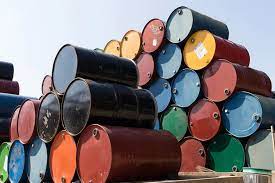Namibia could see an oil boom thanks to several major discoveries that suggest there could be more oil yet to come. An influx of foreign investment has helped Namibia to begin exploring its oil and gas potential, and it looks like it may be quickly paying off with several new finds in recent months, with some dubbing it the “new Guyana”. The government is welcoming external financing in the sector as well as pursuing partial ownership of operations, to ensure the country has greater input in the exploitation of its resources, following the lessons learned of many other African nations.
Several international oil majors, including TotalEnergies, Galp, Shell, QatarEnergy, Chevron, and ExxonMobil, have invested in oil and gas exploration activities in Namibia as they search for low-carbon crude potential that could boost their longevity during a global green transition. Energy experts expect to see a rapid transformation in Namibia’s oil and gas sector following discoveries made in 2022 and 2023, in the Graff-1, Venus-1, and Jonker-1X projects, that suggest there could be much more crude left to find.
In March, Namibia made its third notable find in the Orange Basin, in a project operated by Shell and QatarEnergy. The successful drilling of Jonker-1X has led to more exploration activities in the region and is attracting other major players to the region. Namibia’s National Oil Company Namcor stated that light oil was discovered 270km offshore in Blocks 2913A and 2914B. TotalEnergies also saw recent success in the Orange Basin, with the discovery of light oil in the ultra-deepwater Venus-1 in March 2022, at a depth of approximately 3,000m. Meanwhile, Shell found oil in the Graff-1 exploration well, situated 270km offshore of southwest Namibia in December 2021, with a yield of an estimated 2,000 to 3,000 bpd of crude.
In June this year, ReconAfrica increased its natural gas forecast to 22.4 trillion cubic feet of natural gas in Namibia’s onshore PEL 73 license area in the Kavango Basin. The company decided to speed up the acquisition and processing of a further 1,100km2 in the Damara Fold Belt following successful initial exploration. Recent reports suggest that Shell and TotalEnergies have discovered at least 11 billion barrels of light oil and up to 8.7 trillion cubic feet of gas in Namibia’s Orange basin over the last year and a half. TotalEnergies is expected to announce the results of a flow test on its massive Venus discovery in September, with optimistic expectations for the zone.
The Government of Namibia has used these recent successes to attract more players to its oil and gas sector, encouraging foreign companies to compete for the country’s oil and gas resources. There is significant potential for the development of the midstream and downstream markets in the southern African country, which could see Namibia become a major producer, refiner, and exporter of oil and gas if it can achieve the necessary investment.
Recently, Namibia’s energy minister, Tom Alweendo, addressed the country’s role in foreign oil operations. Alweendo stated, “We are making a case that local ownership must start with the state, which holds ownership of our natural resources.” He explained, “The proposed state ownership should take the form where the state owns a minimum equity percentage in all mining companies and petroleum production, for which it does not have to pay.” Following this statement, several oil and gas firms told the media that they could invest elsewhere if the state intended to take equity from them. However, a source later clarified that the minister’s statement applied to blocks and licenses, rather than companies.
State-owned NAMCOR already has a 10 percent stake in the country’s mines and petroleum licenses as part of exploration agreements with investors. The government hopes to develop the country’s hydrocarbon sector rapidly, while demand for oil and gas remains high, to ensure it is developed effectively. However, it is also focused on ensuring that the state sees a reasonable return from its oil and gas reserves, unwilling to put its resource wealth entirely in the hands of foreign players, as so many African countries have done in the past. Robert Bose, president of Sintana Energy, stated “There is a real desire on the part of the Namibian government at all levels … to do this as quickly as possible and to harness this opportunity.” He added, “That is being counterbalanced by a very strong desire to ensure that, through the development of local capacity, the local stakeholders, citizens and the nation as a whole benefit maximally.”
There are high hopes around Namibia’s oil and gas potential, with many expecting a boom in the southern African state within the coming decade. Several major international players have already invested heavily in exploration activities in the region, with many more expected to follow. There is also significant potential for the development of Namibia’s midstream and downstream sectors, which would allow it to become a major oil and gas power in the region.

 Iran Energy News Oil, Gas, Petrochemical and Energy Field Specialized Channel
Iran Energy News Oil, Gas, Petrochemical and Energy Field Specialized Channel



